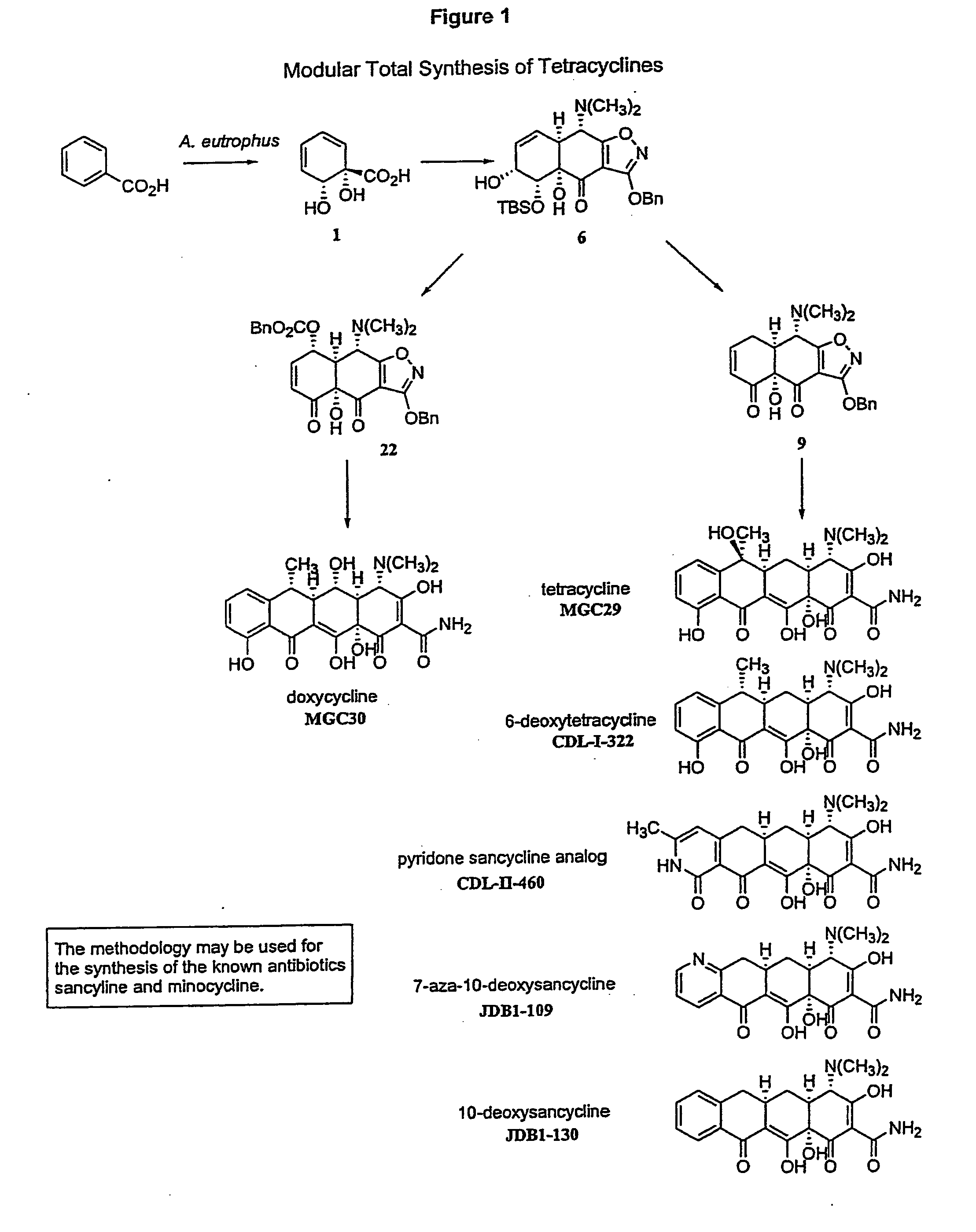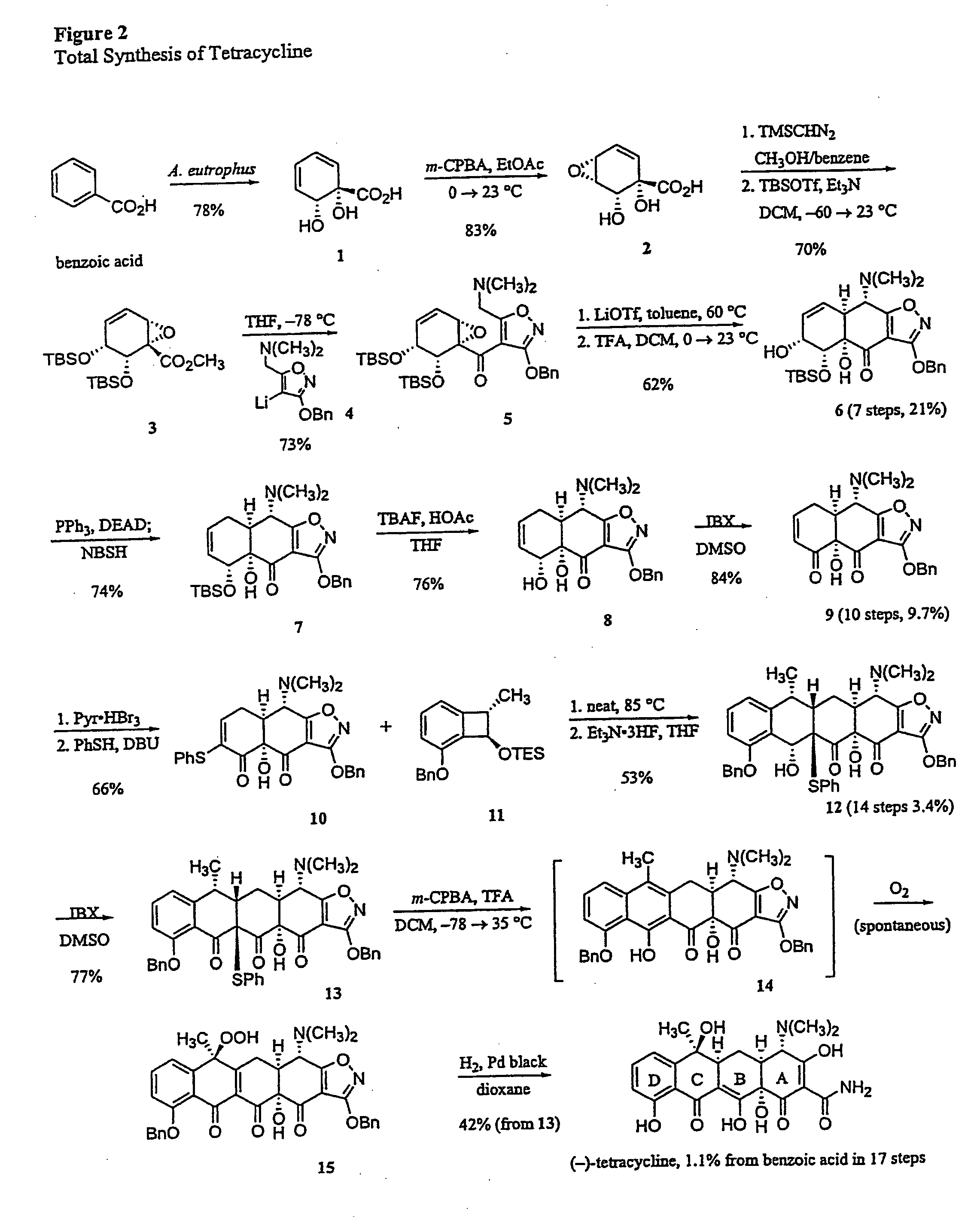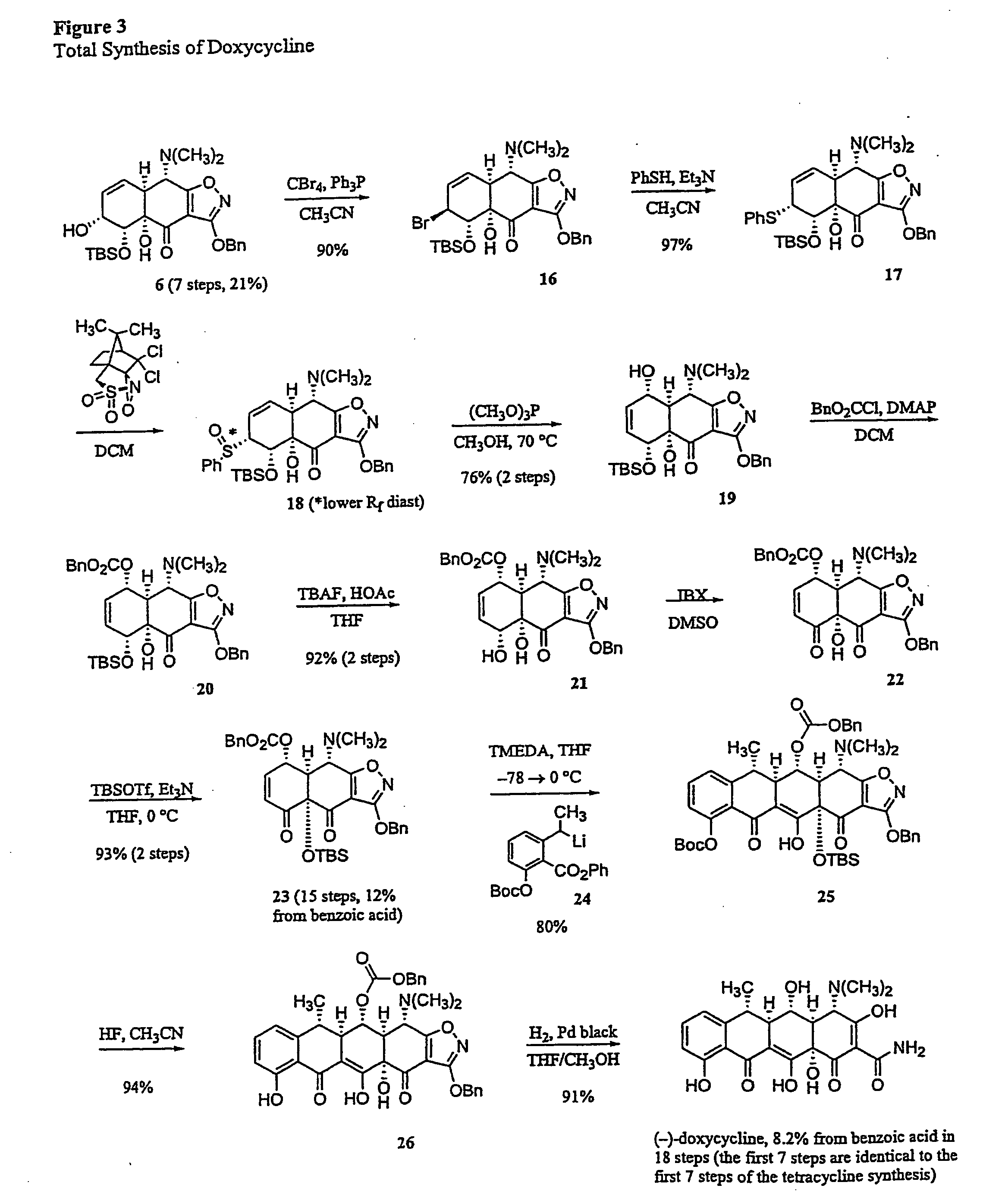Synthesis of tetracyclines and analogues thereof
a technology which is applied in the field of synthesis of tetracyclines and analogues thereof, and can solve the problems of loss of activity, insufficient concentration of eukaryotic cells to affect protein synthesis, and limited the number of tetracycline analogs that can be prepared and studied
- Summary
- Abstract
- Description
- Claims
- Application Information
AI Technical Summary
Benefits of technology
Problems solved by technology
Method used
Image
Examples
example 1
Synthesis of (−)-Tetracycline
[0196] General Procedures. All reactions were performed in flame-dried round bottomed or modified Schlenk (Kjeldahl shape) flasks fitted with rubber septa under a positive pressure of argon, unless otherwise noted. Air- and moisture-sensitive liquids and solutions were transferred via syringe or stainless steel cannula. Where necessary (so noted), solutions were deoxygenated by alternative freeze (liquid nitrogen) / evacuation / thaw cycles (≧ three iterations). Organic solutions were concentrated by rotary evaporation at 25 Torr (house vacuum). Flash column chromatography was performed on silica gel (60 Å, standard grade) as described by Still et al. (Still, W. C.; Kahn, M.; Mitra, A. J. Org. Chem. 1978, 43, 2923-2925; incorporated herein by reference). Analytical thin-layer chromatography was performed using glass plates pre-coated with 0.25 mm 230-400 mesh silica gel impregnated with a fluorescent indicator (254 nm). Thin layer chromatography plates were...
example 2
Synthesis of (−)-Doxycycline
[0248] Allylic Bromide MGC19:
[0249] Triphenylphosphine (297 mg, 1.13 mmol, 3.5 equiv) and carbon tetrabromide (376 mg, 1.13 mmol, 3.5 equiv) were added in sequence to a solution of the allylic alcohol MGC6 (162 mg, 0.324 mmol, 1.0 equiv) in acetonitrile (2.5 mL) at 0° C. The resulting brown suspension was stirred at 0° C. for 10 min, then the cooling bath was removed. The mixture was allowed to warm to 23° C. and stirring was continued at that temperature for 10 min. The mixture was partitioned between ethyl acetate (50 mL) and saturated aqueous sodium bicarbonate solution (40 mL). The organic phase was separated and the aqueous phase was further extracted with an additional 50 mL-portion of ethyl acetate. The organic phases were combined and dried over anhydrous sodium sulfate. The dried solution was filtered and the filtrate was concentrated, providing a brown oily solid. The product was purified by flash column chromatography (1:9 to 2:8 ethyl aceta...
example 3
Synthesis of 6-Deoxytetracycline
[0270] Ester CDL-I-280:
[0271] A solution of sec-butyllithium in cyclohexane (1.40 M, 24.0 mL, 33.6 mmol, 2.6 equiv) was added to a solution of N,N,N′,N′-tetramethylethylenediamine (4.9 mL, 33 mmol, 2.5 equiv) in tetrahydrofuran (25 mL) at −78° C. The resulting yellow solution was cooled to −90° C. (internal temperature) in a liquid nitrogen-ethanol bath. A solution of o-anisic acid (2.00 g, 13.1 mmol, 1.0 equiv) in tetrahydrofuran (10 mL) was added dropwise via cannula over a period of 30 min to the yellow solution. The resulting orange suspension was stirred for an additional 30 min at −90° C., then was allowed to warm to −78° C. over 15 min, whereupon iodoethane (4.2 mL, 52 mmol, 4.0 equiv) was added. The mixture was allowed to warm to 23° C. over 15 min, then was partitioned between water (50 mL) and ether (50 mL). The aqueous layer was separated and diluted with aqueous hydrochloric acid (1.0 M, 100 mL). The resulting mixture was extracted with...
PUM
| Property | Measurement | Unit |
|---|---|---|
| Electrical resistance | aaaaa | aaaaa |
Abstract
Description
Claims
Application Information
 Login to View More
Login to View More - R&D
- Intellectual Property
- Life Sciences
- Materials
- Tech Scout
- Unparalleled Data Quality
- Higher Quality Content
- 60% Fewer Hallucinations
Browse by: Latest US Patents, China's latest patents, Technical Efficacy Thesaurus, Application Domain, Technology Topic, Popular Technical Reports.
© 2025 PatSnap. All rights reserved.Legal|Privacy policy|Modern Slavery Act Transparency Statement|Sitemap|About US| Contact US: help@patsnap.com



